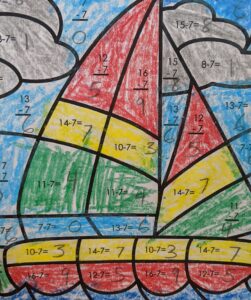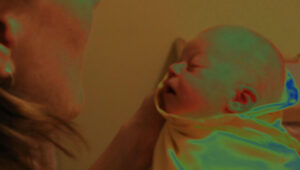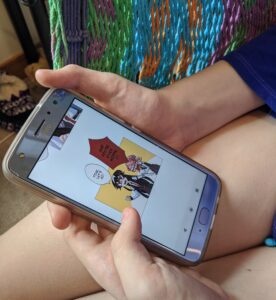
Neurodiversity is a term not yet widely used by society.
Broadly defined, it’s a stance providing “a viewpoint that brain differences are normal, rather than deficits” – but it tends to be used most often when referring to individuals on the autism spectrum, like my 10-year-old son D.
While not nearly as loaded, in some ways neurodiversity is just as iffy and tenuous a term as giftedness. Just as some say “we’re all gifted in our own way”, surely we all “view the world in a different way” – isn’t that the very nature of epistemology and subjectivity?
But the terms gifted and neurodiverse become much more useful when you consider that kids with these formal diagnoses, especially in combination, really do need extra, different support in order to be successful in school. An assignment that could appear straightforward and meaningful to 95% of the class, for instance, might legitimately strike the other 5% (i.e., the one twice-exceptional, neurodiverse kid out of 20) as nonsensical or pointless.
To that end, my gifted, neurodiverse son was asked to complete a poem called “Where I’m From” last week, as a creative way to express his origins and let his new 5th grade teacher get to know him a little better. Here is part of the template:
“I am from [specific ordinary item]
From [product name] and [product name]
I am from the [home description]
[adjective], [adjective], [sensory detail]”
etc.
I remember writing this type of poem about myself back in one of the first teacher education courses I took in college, and finding it a profoundly rewarding and insightful experience. I loved getting to think back viscerally to my upbringing, sharing some of the unique sights and sounds and smells that infused my first-generation Norwegian-American household.
For my neurodiverse son, however, this assignment was perceived as painful and intrusive. He didn’t understand the point of simply filling in the blanks of “specific ordinary item” or “description of family tendency”. It could be that he’s too young to engage with this kind of metaphorical literary activity (I’m curious what his classmates came up with), but it’s more likely he was simply befuddled by the point of it all.
I should add that my son – as I pointed out in my last entry – loves language and words. He wants to know the origin of phrases, adores puns, and notices things about words (in terms of roots and spelling) that others might easily miss. He admires and enjoys the silly poetry of Shel Silverstein and Jack Prelutsky.
So, how could I help D. make sense of the “Where I’m From” poetry assignment?
Or, perhaps more appropriately – how could I help his new teacher understand why this kind of activity is so challenging for him?
In a blog post for Scientific American entitled “Clearing Up Some Misconceptions About Neurodiversity” (2019), Aiyana Bailin reminds us that:
Autism and other neurological variations (learning disabilities, ADHD, etc.) may be disabilities, but they are not flaws. People with neurological differences are not broken or incomplete versions of normal people… Neurological variations are a vital part of humanity, as much as variations in size, shape, skin color and personality.
She adds:
When we talk about “not pathologizing autism,” we don’t mean “pretending autistic people don’t have impairments.” But we also don’t assume that neurological and behavioral differences are always problems. For example, there’s nothing inherently wrong with disliking social activities. Not wanting to socialize is different from wanting to participate and being unable to. Both are possibilities for autistic people. One requires acceptance, the other requires assistance.
So – does my son need assistance with writing a poem like “Where I’m From”, or acceptance from his teacher that this simply isn’t something that makes sense to him?
And can I – should I – teach him how to self-advocate on behalf of submitting work that meets the requirements in a different way?
We got through that particular assignment by doing it together – or rather, I basically fed him ideas for each blank and “we” submitted it.
But – that’s not sustainable or appropriate. And when he was asked the next day to complete another writing assignment about his personal experiences in school (specifically related to online learning during the shutdown in spring), he flat-out refused.
I left him to do the work, and came back to see that he had written something along the lines of, “These questions are too personal. I don’t want to answer them. This is three sentences.” And that was it. (He had been asked to respond to five different sets of prompts, in 3-4 sentences each.)
I tried engaging with him to see if I could figure out what was bothering him; I reminded him that his teacher was simply trying to learn more about him to help him have a better time with online schooling this year.
He wouldn’t budge.
He finally said to me, with a touch of emotion in his voice, “Mommy, you’re just asking me the same question in different ways. Those questions on the slides are too personal, and I don’t feel safe answering them.”
At that point, something in me shifted. He was right: I was asking him the same question again and again, in an attempt to help him build empathy for his teacher’s perspective. But D.’s perspective was important, too.
Neurodiverse kids can sometimes be perceived as “unemotional”, given how linear and factual they come across. However, this is far from true. My son feels very strong emotions – ones that sometimes bubble to the surface at surprising moments, demonstrating how he truly does see the world in unique, multi-faceted, and deeply felt ways.
Yesterday, for instance, while at my parents’ house, we were playing the game Apples to Apples, sitting at the edge of their garage to social-distance and trying to stay shaded in the fresh air.
(Apples to Apples, for those who haven’t played it, is a card game where players try to select a word-card from their hand that MOST matches a descriptor provided by the person who’s “on” for that round.)
The word at the center of the table during one particular round was hurt, and my son chose to put forth the card “deer hunting”. He then explained to me, “It HURTS the deer who’s being shot – but it also HURTS the person who’s doing the shooting.”
Yes, indeed. It often does.
Another recent example:
Last night I was reading aloud to D. from our newest night-time novel – Holes (1996) by Louis Sachar. A central feature of this complex, back-and-forth narrative (primarily taking place in current times at a juvenile detention facility) involves a white female schoolteacher in the 1880s falling in love with a black male onion seller, who is then nearly lynched (and does die) for the “crime” of kissing her. As I read this part aloud to D., he said with exasperation and frustration:
Racism… slavery! Fighting… war!
Then he contemplated what he’d just said (which is common for D. – he often provides an instant meta-commentary on his own speech). He said:
I just put one word and then a more extreme but related word after it. I’m not sure why…
I helped him understand that he was making analogies, and that they were entirely apt: one of the worst, most extreme outcomes of racism is slavery; one of the worst, most extreme outcomes of fighting is war.
He doesn’t understand the “point” of any of these existing, by the way. Why in the world do we fight? Why do we go to war? Why is stupid racism even a thing – at all? And how in the world could slavery have ever taken place?
The fact that neurodiverse individuals may be more inclined to voice such views openly and without hesitation is, in my opinion, ultimately a gift – but not one without problems. D. is very blunt, and doesn’t always understand when it’s “appropriate” to voice his opinion (or not). Sometimes he’s convinced he knows the “truth”, and is not able to see beyond his own definition.
Regarding complex issues such as systemic racism and violence, he’ll need to learn about the many factors that play into the existence of these realities – to help combat them, rather than simply dismissing them as ridiculously wrong.
With that said, I sense D. will bring an invaluable, pragmatic approach to the table. He is sensitive, caring, intelligent, and insightful – and if he can’t express those qualities in the “traditional” format of his assignments, we’ll have to work with him to find alternative means of expression.
Because he does have a lot to say, and many important contributions to make to the world. He just needs plenty of support in doing it well.
Copyright © 2020 by HalfoftheTruth.org. Please feel free to share with attribution.


 Parenting is an interesting craft.
Parenting is an interesting craft.
